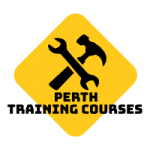Employee safety is a number-one priority when it comes to building and construction. This is especially the case when lifting heavy items using cranes or heavy equipment. Getting a trained rigger and a signal individual at the construction site is a necessity to ensure the safety of everyone concerned. Don’t underestimate the value of good rigging and signal training.
What is rigging safety?
Rigging safety is the sum total of steps taken to reduce the risk of harm to persons when rigging. Precautions include proper training of staff, adequate personal protective equipment, routine inspections of equipment, environmental risk assessments, proven communication and emergency/backup procedures.
What are Rigger’s tasks and responsibilities?
Riggers are responsible for the use of ropes, pulleys and other devices, such as heavy chains, cables and straps, to secure heavy loads, which are then to be transported by means of a crane. Riggers have the experience they need when it comes to knowing which hooks to attach and how much weight various cranes can carry. They have a great understanding of the center of gravity of the load needed to ensure proper balance, stability and mobility of the load at all times.
To those unfamiliar with the construction site, the crane operator may appear to be the person with the greatest responsibility.The Rigger has just as much responsibility, if not more than the crane operator, as it is responsible for properly rigging and managing the load. Without an experienced rigger with rigging training in place and a correctly rigged load, the site can easily become a danger zone.
What are the Functions and Duties of the Rigger or the Dogger?
If the rigger has correctly rigged the load, it is the rigger’s responsibility to direct the crane operator safely in moving the load from its rigging position to where it needs to go. The rigger is the eyes and ears of the crane operator on the ground and is responsible for ensuring that all operations of the crane are carried out safely. This is achieved by using clear hand signals, which are understood by both the rigger and the crane operator.
A qualified riggeris responsible for:
- Inspect your facilities and rigging equipment
- In compliance with official standards and regulations and requirements
- Properly set up the cranes
- Meet the proper operating methods
- Understanding the load charts to know how much work a crane can do safely
How do you become a Rigger or Dogman?
In order to become a licensed rigger and or dogger, it is a requirement that a person must undergo one of the NCCCO job training courses in which he/she learns the techniques and responsibilities of the dogging, crane rigging and crane operation. You can do this by enrolling in a dogman course in Perth. Also the knowledge of hand signals and voice-activated and audible signals, the operation of the cranes and the fundamentals of rigging, load handling and other environmental factors. Individuals must pass both a written and practical exam provided by an approved organisation of the National Commission for the Certification of Crane Operators (NCCCO). The Rigger and dogman Credential is a document that indicates that someone has demonstrated their ability to perform the tasks expected of a skilled Rigger and dogman.
What is the Value of Safety When Running Construction Equipment?
Construction sites can be very risky for inexperienced individuals who are not well educated and trained to know how to deal with heavy machinery and cranes. A false move can easily lead to serious injury or even death.
The signal operator needs to know the types of signals used at the work site, to be able to use such signals competently, to know the crane equipment, its limitations and all the dynamics involved in crane and boom movement and raising, to be able to demonstrate information through oral, written and practical assessments and to be tested by a third party or in-house trained evaluator.
Previous Post:
Which class of rigging is right for you?

